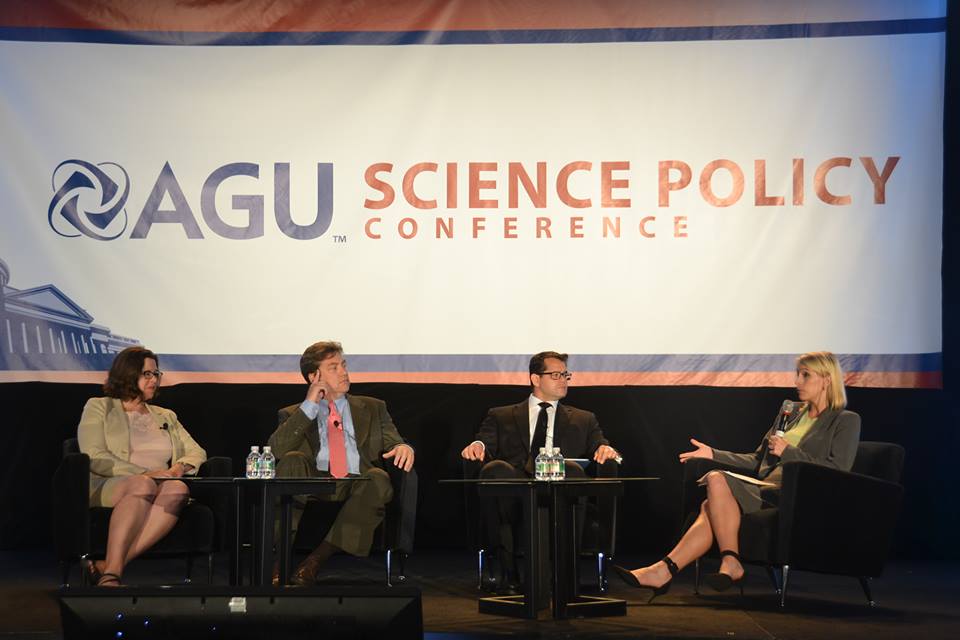July 1, 2014
Houston…we have a problem
Posted by Fushcia Hoover
By Nanci Bompey
Climate change and the actions people can take to combat it are hard for most people to see – and that could be part of the reason why some people are more worried about an asteroid slamming into the Earth than the threat of a warming planet, according to panelists at the AGU Science Policy Conference held 16-18 June 2014.
The debate around climate change – and its relationship to the space program — was one of several topics discussed during the wide-ranging plenary session 18 June that also touched on public and private investment in the space and energy sectors and other issues.
Climate Change May Have an Image Problem
While Hollywood movies may be part of the reason people are afraid of a space rock colliding with our home planet, asteroids are also tangible, said Peter Marquez, Vice President of Global Engagement at Planetary Resources, a company developing spacecraft to explore and extract resources from asteroids.
“I can take a picture of an asteroid and I can show you that picture and I can say this is its orbital track,” Marquez said during the session, “You can debate climate change – and that’s a bar fight I’m not going to get into – you can debate all these other things because you can’t touch it, you can’t see it, but I can show you the orbital track and you really can’t argue with Kepler.”

Panelists from the ‘Business of Science: Is Public Investment Driving Private Innovation?’ plenary. Left to right: Kate Gordon, Tom Kimbis, Peter Marquez and moderator Amy Harden. Credit: AGU SPC 2014
They agreed that the difficulty of “seeing” climate change also extends to the actions people take to combat it. Unlike recycling, where people can put a bottle in a recycling bin and see it taken to a recycling center, people don’t exactly know what they are supposed to do in their daily lives to address climate change and how those actions will translate into real outcomes, said Tom Kimbis, Vice President of Executive Affairs at Solar Energy Industries Association, a national trade association comprised of industrial members dedicated to promoting, developing and implementing the use of solar energy in the US. “When it boils down to an individual citizen, I think it is so overwhelming that I think some people don’t even want to believe that it is even true or if they do acknowledge it is, the real doubt is what do we do to act upon it individually, ” he said.
But it may even be too early to start talking about solutions to climate change or developing a national policy around the issue, stated Kate Gordon, Executive Director of Risky Business, an initiative examining the economic risk of climate change in the U.S., who just came out with a report on the issue last week. The clean energy and climate change sectors could take a lesson from the space program by having a national goal similar to the moon shot that once galvanized the entire country around putting a man on the moon, Gordon said. But before that can happen, there has to be a recognition that action needs to be taken. That recognition might not come from a strong personal sense of urgency, but from the realization that a lot of other people feel threatened. “Even if you don’t believe it, enough people do that you need to have some kind of insurance policy, you need to take some kind of action,” she said. “Then I think we’re in a place to have that conversation [about a national climate policy].”
Furthermore, climate change needs to get into “people’s sense of self” and climate risk needs to be “built into the DNA of every decision” people, businesses and the government make – including the space program, Gordon said. “Every single decision has to have an element of thinking about climate risk just like every decision has an element of thinking about economic risk”.

